The adventure began when Kyle and Seton arrived and reunited in Kathmandu, Nepal, on the night of December 23rd. From there they flew together to Delhi and took a taxi in the dark to their hotel where they went straight to bed, knowing they would need to be well-rested for the days and weeks to come.
For foreigners in India, independently hiring cars isn’t allowed, so in the morning Kyle and Seton had to organize their transportation: both a driver and SUV to carry people, canoes, and other gear for the trip. Just before the car arrived at the hotel, Tom got into Delhi. With the group ahead of schedule, they left Delhi by noon that day, dumbfounded at how smoothly the trip was going as well as excited to finally be together fulfilling the expedition.
They drove to the shipping yard where the canoes, donated by Cape Falcon Kayak in Portland, Oregon, were waiting. It was chaotic at first to find them, and the people at the yard made Kyle, Tom, and Seton put on safety gear: the orange vest, hard hat, and the works.
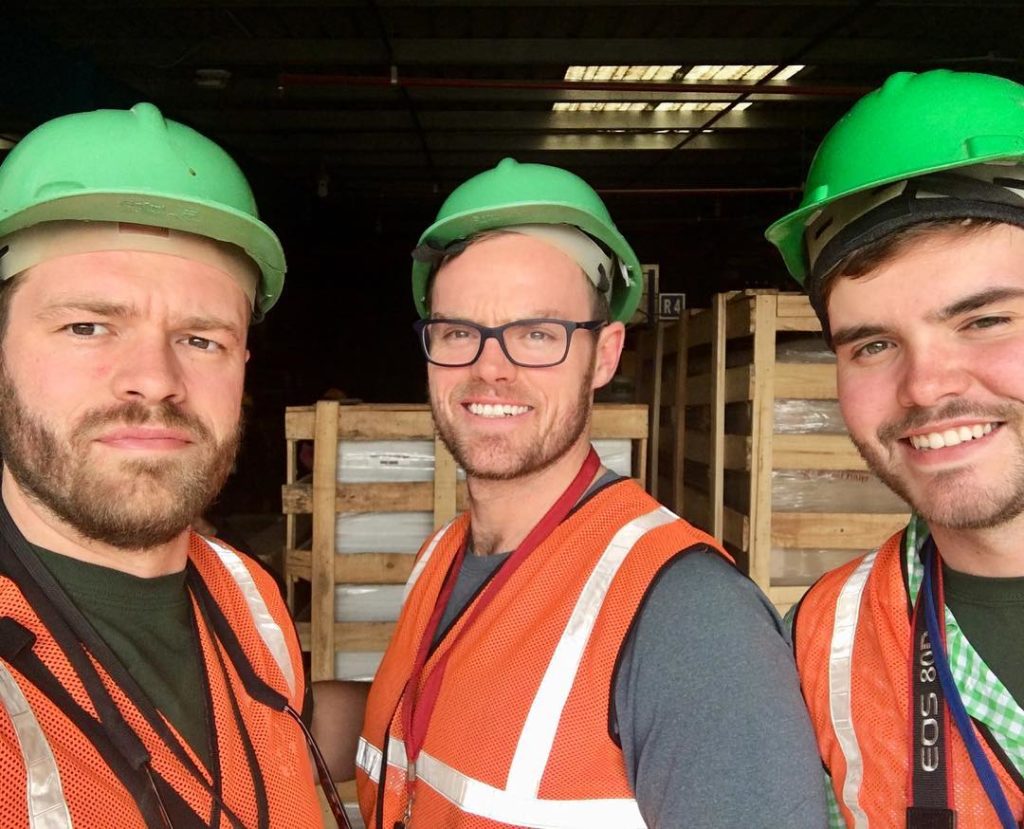
But the box was there, and the canoes had arrived without a scratch. Some of the people at the yard helped them get the box open and, with an audience of about twenty locals, get the canoes out. People thought the scene was funny, but were more curious than humoured about how and why someone had shipped two canoes from Portland to Delhi. There was also some confusion about how they were actually going to transport them further, assuming that the SUV was too small, but the brothers tied the canoes onto the roof of the car as usual and went on their way to their next stop, Agra.
They drove through the country towns with Punjabi music blaring. Out the car windows they could see locals staring and pointing, smiling at the canoes. The drive to Agra acted as a time for reflection, to think about the excitement and disbelief of the situation, and to relish in the joy of being there with family.
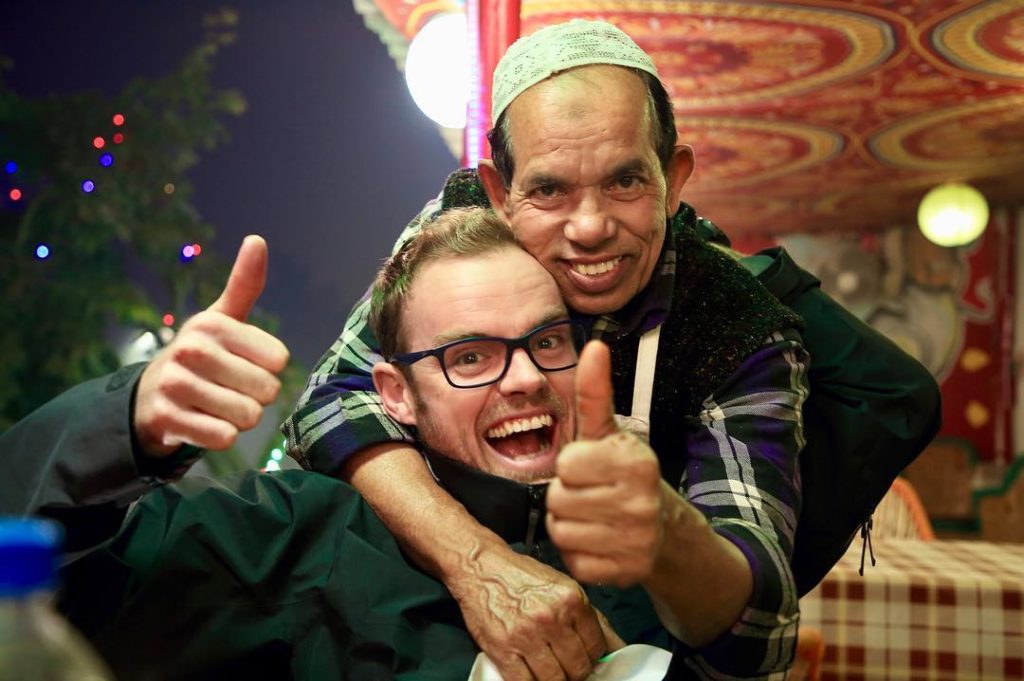
They got to Agra just as the sun was setting and started to settle in at the Rainbow guest house, their home for the night. Because it was Christmas Eve, they set up a Skype call with family back home. They caught up, shared the excitement of the trip, and exchanged a few Christmas gifts before going to bed.
The next morning they woke up early and continued to get accustomed to India. They could hear the sound of a prayer chant out their window before the sun had even risen. Kyle and Seton went up to the roof to record. It was fairly silent except for the prayer distantly coming out of a loudspeaker, where they recorded a bit of video and stayed to absorb the sound of Agra as the sun rose. The moment was an affirmation of the eminence of a moment in time, a reminder that new places are often the most magical, especially when it’s Christmas morning.
They started walking down the streets, chaotic even in their morning quiet. It was still dark and hazy with the fog and the pollution in the air. Walking down a red brick road, they followed some faint lights and turned to the right to see the Taj Mahal looming over them. Through the haze it looked unreal, like a sketch or a drawing, ominous and powerful like in a book or movie, and it became clear that this day would become more memorable than a traditional Christmas at home.
One of the smaller goals of the trip was to get a picture of Kyle and Tom with their canoes by the Taj Mahal, but the feat was more difficult than it seemed. The security at the mausoleum was so strict that even a deck of cards was prohibited. Tom had a toy in his pocket that he uses for good luck and had to beg the officials to keep it, and, under the radar, they let him.
The brothers realized that the photo would require more planning, so they decided to go around the back to the garden area where it was easier to get a good picture. Security wasn’t happy there either, but they did come across locals who said they could find them a better photo spot for a fee. Wanting to avoid extra spending, as well as maintain the pride of an independent quest, they got into the car and drove a bit down the road.
They came across a public sports field where kids were playing soccer and cricket. It was clear that even with the canoes Kyle and Tom would be able to walk right in and see the Taj Mahal from there. As they walked, they gained more of a crowd. It was only about 750 m to get to the spot but they were still surrounded by locals who had paused their cricket games, laughing, hitting the boats, asking what they were doing. In India, making connections is second nature.
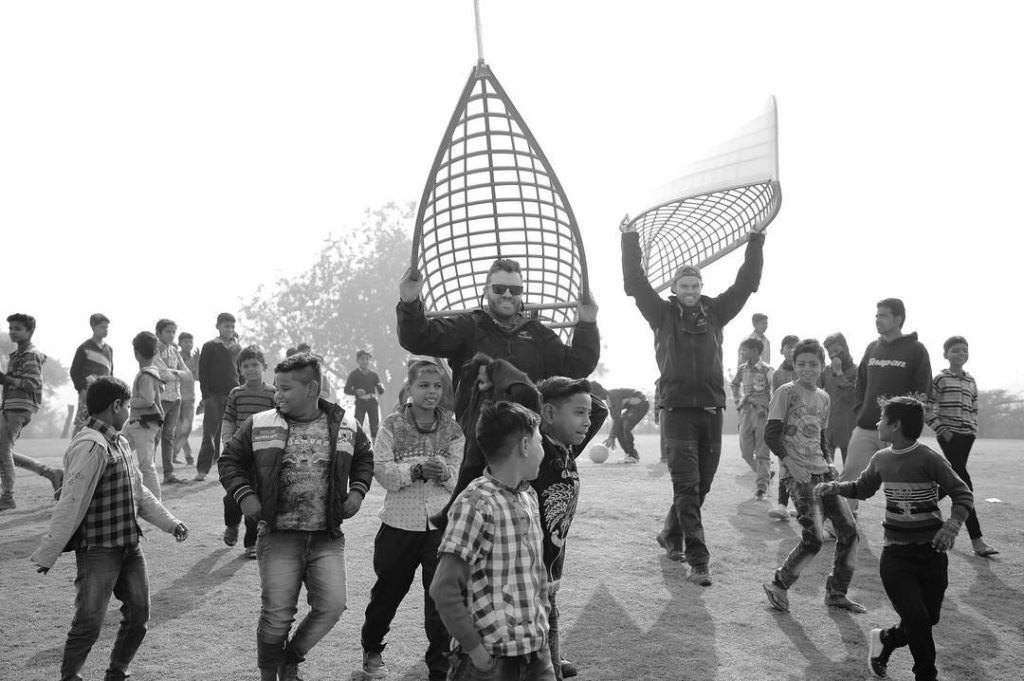
Finally having a good photo op, they started to set up the shot when a man came up and told them they couldn’t take the picture. He was likely angry that the brothers hadn’t paid any kind of duty or fee, and threatened to call the police. Wanting to avoid any kind of legal scuffle with the Indian police, they had to pick up the canoes and drive away. They still managed to get a couple canoe-less pictures in front of the Taj Mahal, but the image of two brothers portaging by the mausoleum only exists in their imaginations.
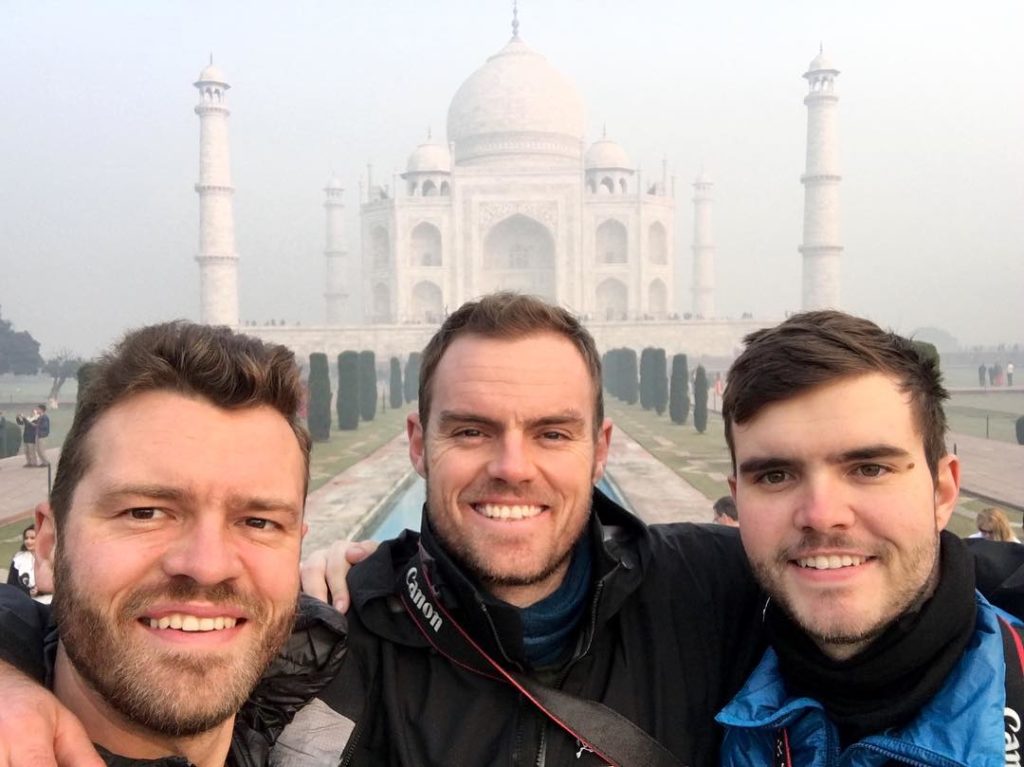
They drove to Faizabad where they had a nice Christmas dinner and spent the night. In the morning they started the drive to the Indian-Nepalese border, by a town called Sonauli. Spirits were high traveling through the rural towns towards the border. The trip was going smoothly and the environment was still friendly, with locals waving at the vehicle and the canoes.
Kyle decided to pull out his phone to check the map and see where they were but quickly realized that there had been a miscommunication. There are actually two towns named Sonauli, and they were headed toward the wrong one. At this point the group was supposed to be at the border but were actually around four hours away and had to turn back around. They took a presumably shorter detour through the farm villages of the countryside. It was bittersweet; it was easy to be disappointed by the miscommunication but here the air was cleaner than in the cities. They would occasionally see a Hindu sculpture, sometimes the god Shiva, looming over them by the side of the road, shining gold among the farmland. They arrived at the correct Sonauli later than planned, but not drastically.
There was a lot of uncertainty about crossing the border into Nepal: whether there would be duties, if they would get stopped, if they would be able to cross with the canoes at all. They got out of the car and carried the boats down to a small hut with a sign that said “Indian Immigration” on it, again catching attention from locals, officers, and other people trying to cross the border. But the process was smoother than expected. A not-for-profit with nothing to hide, they didn’t have to pay any duties and got their passports stamped without any hassle. Everyone let out a sigh of relief as they continued through the no-man’s-land between India and Nepal.
The surrounding people and community were remarkably supportive and the brothers happily answered questions and joked with locals as they walked about a kilometer to Nepal.
This was another particularly special moment of the trip: finally crossing the border into Nepal after ages of planning and anticipation. After visiting the country twice before, with some preparation for this expedition, it felt like coming home.
In Kathmandu they would see familiar faces on the streets, know where to get a good bite to eat, or get a drink or two. They already loved the atmosphere and the welcoming nature of everybody they came across, all with glowing smiles and open arms. They’d also become good friends with Matrika from KOSHISH, the organization The Weight We Carry has partnered with to help build a Women’s Mental Health Transit Centre in Kathmandu.
Matrika had arranged for the group to get picked up at the Nepalese border. It was a comfortable seven hour drive through the foothills of the Himalayas, down winding roads, wheeling up and down the hills of the area. The group sat in the van and ate vegetable momos, a Nepalese favourite.
They stopped in a rural area and met up with a family who lived there, graciously accepting a dal bhat dinner. The meal was warm and atmospheric, served off a clay fireplace in the dark, another reminder of the divinity of the place and the moment.
After over eighteen hours the group arrived in Kathmandu, tired from the travel but still anxious knowing that the trek would begin in the next couple of days. They would leave for Salleri, the closest spot to Everest that can be accessed by car, on a fairly treacherous road that Kyle and Tom had driven before. They’ll then hike to Lukla with the canoes and continue the month-long trek to base camp with the whole team: Kyle and Tom with canoes, Seton capturing the events, and Dane, Maggie, and Fiona as further support along the way.
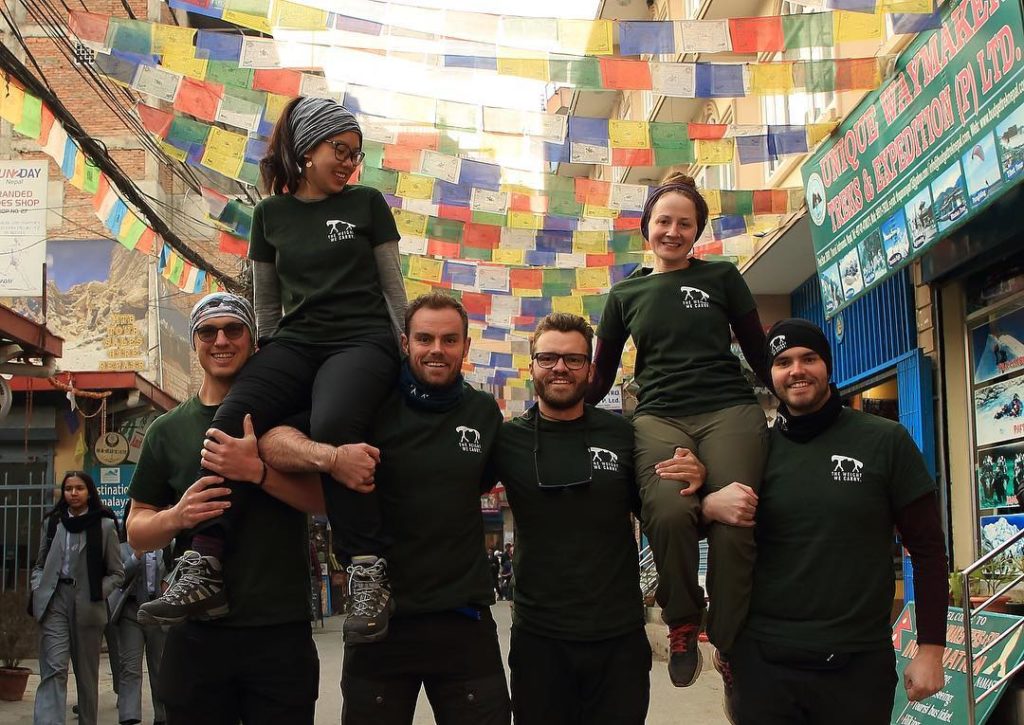
After prior injuries and less than comfortable experiences, it’s easy to get caught up in the moment, but the anxiety is overcome with excitement, joy, and the urge of knowing that the trek is to help a greater cause. In Tom’s words: “The thought that I like to keep with me is that success is not final, and failure is not fatal. It’s the desire to continue. That’s what’s important and that’s what this trip’s all about.”
Written by Anabelle Zaluski

